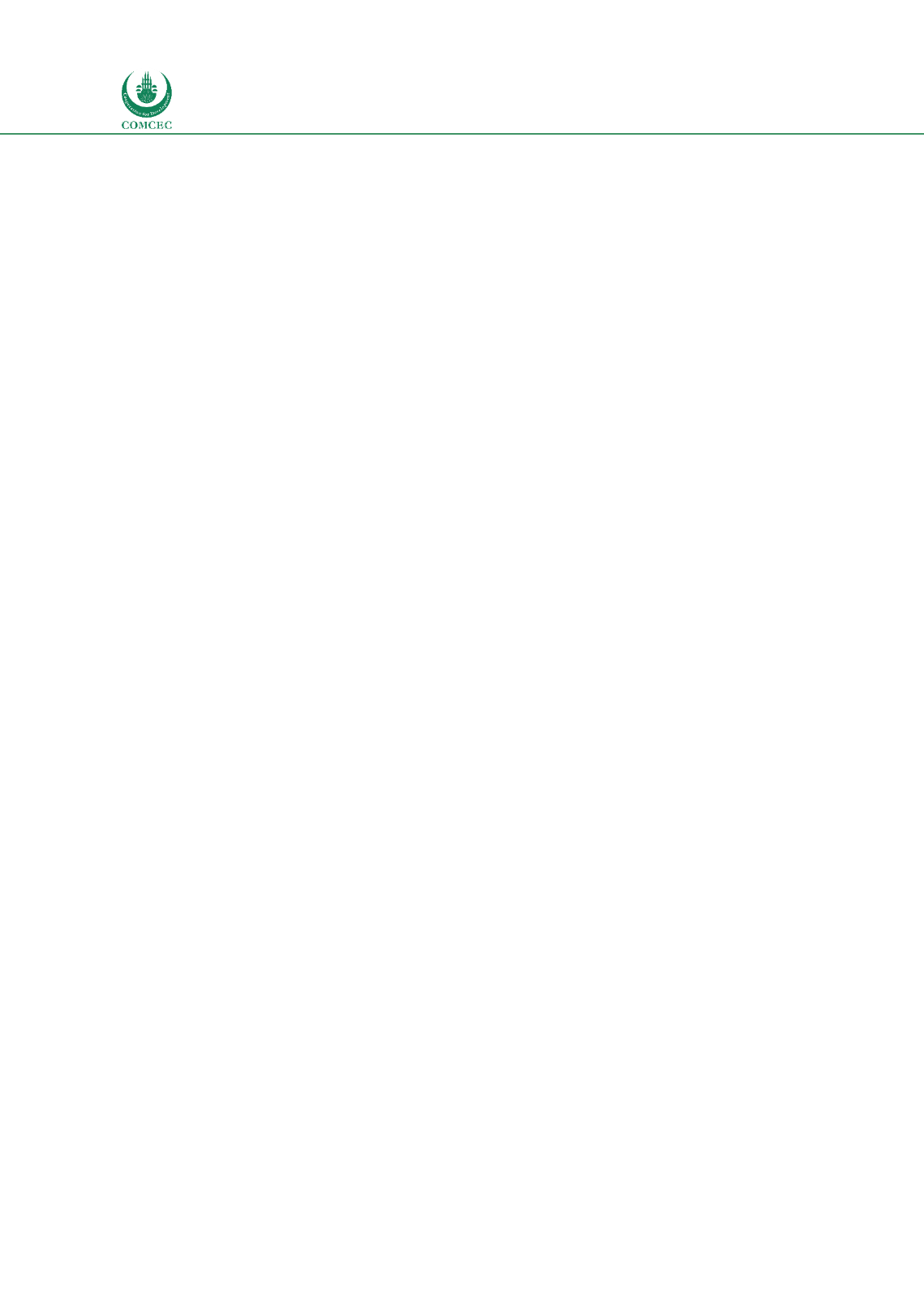

Enhancing Public Availability of Customs Information
In the Islamic Countries
98
5.
CONCLUSION AND RECOMMENDATIONS
This report has brought together a wide variety of data and country experiences to examine
where OIC member countries stand in relation to the public availability of Customs and trade-
related information. The OIC is, of course, a very heterogeneous group in terms of geography,
trade relations, governance structures, and level of economic development. The data review
therefore suggests that there is mixed performance within the group: some countries are
approaching the global best practice frontier, while others are still a considerable distance from
that point.
A key finding from the data review is that there is clear evidence of a process of catch up in terms
of the public availability of Customs and trade-related information. In other words, countries
with the lowest absolute level of performance tend to see the largest relative improvements in
performance over time. The review presented here is consistent with the point made in
successive
Connecting to Compete
reports by the World Bank, to the effect that Customs
procedures are tending to converge around the world. This ongoing development is the result
of a number of work programs at the international level, principally shepherded by the WCO,
but also now including the TFA. Of course, it is important to remember that international
benchmarks typically represent a generally required standard of performance, not global best
practice. The frontier, represented by countries like Republic of Korea and Singapore, is
considerably beyond even the most recent international instrument, namely the TFA. As a result,
developing OIC member countries have an interest in being as ambitious as possible in
scheduling their TFA commitments: although the agreement accords them great flexibility to
delay implementation, they in fact have every interest in proceeding quickly. That point has well
and truly been recognized by the leading performers in trade facilitation among OIC member
countries.
Although there are some differences across data sources, there is also evidence of a general
improvement in performance by many OIC member countries. The rate of improvement differs,
but it is clearly a general tendency in all three regional groups. The evidence of backsliding in
the TFIs is deserving of further analysis, but does not fit with other evidence, for instance from
the UNGS. Nonetheless, OIC member countries would do well to set up their own performance
tracking mechanisms, so that high impact interventions can be quickly identified and
implemented, then corrected and fine-tuned over time.
An important point that emerges from the country case studies is that it is difficult to improve
the transparency of trade processes—which is what increased information availability
implies—in isolation from what is happening elsewhere in government. Successful examples of
movement forward on reducing the information costs associated with trade transactions are
typically linked to broader governance reforms to encourage transparency and participation, as
well as anti-corruption and reduction in administrative (including Customs) fraud. Similarly, the
use of information technology solutions to promote information availability requires
widespread internet access among commercial agents, as well as sufficient development of
human resources to allow members of the trade community to interact with border agencies
electronically.
















